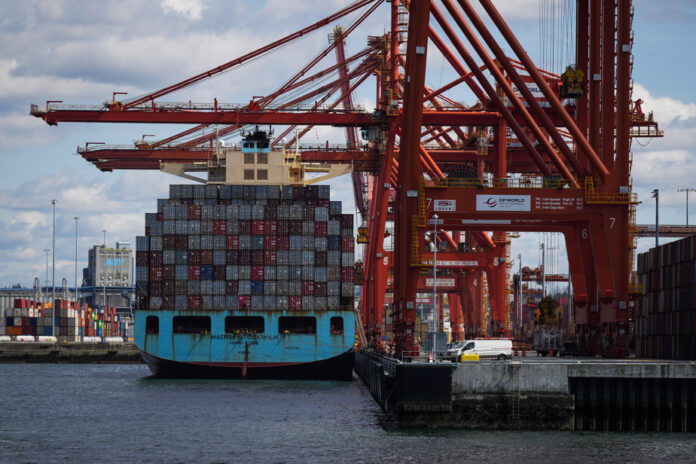Lower container prices, more reasonable lead times, and fewer contingencies: the supply chain is back on track after the pandemic disruptions. The lull may be short-lived if the strike at the port of Vancouver – the largest in Canada – continues.
Even though it takes place about 4,600 kilometers to the west, the walkout of some 7,400 longshoremen in about 30 ports spread across British Columbia – which was in its third day on Monday – is generating concern as far as Quebec. . In the immediate future, we do not anticipate stock shortages in stores, but this could change if the longshoremen do not return to the docks.
“After a week, we will feel it, believes customs broker Pierre Dolbec, president of Dolbec International. It will be even worse than at the Port of Montreal. There are finished products and raw materials that arrive from Asia. Delivery delays are likely to cause production interruptions. It’s hard to quantify, but the whole machine will be affected. »
In Canada, the Port of Vancouver is the main gateway for containers shipped from Asia. Annually, the equivalent of 305 billion dollars of goods passes through it. For Dolbec International, 65% of the cargo handled in Asia is routed to the Canadian west coast.
While the business community pleads for rapid intervention by the Trudeau government, for example with the adoption of a special law, the longshoremen’s union urges Ottawa not to interfere in the file. The fear among contractors and traders is that the strike will drag on and that the metal boxes will remain on the container ships or be unloaded elsewhere, which could increase delivery costs .
“Restarting the wheel takes a long time,” says La Vie en Rose vice-president, logistics and distribution, Jean-François Thériault. Two days of conflict will disrupt the channel for ten days. Five days of conflict […], for a month. If this is not resolved quickly, the impacts will be significant for retailers in view of the next season (fall-Christmas). »
For companies that depend on maritime transport, this labor dispute comes at a very bad time. They were starting to get some respite from the disruptions of the health crisis, which caused container prices and delivery times to spike.
According to the Global Container Freight Index, one of the leading daily industry benchmarks for container shipping prices, the price of a 40-foot canister was around US$1,280. This is much lower compared to the average price above $11,000 recorded in the fall of 2021.
“We have just returned to something more normal since the start of the pandemic, and this is happening, launches Lili Fortin, president of the Tristan chain. Our cargo doesn’t just come from the Port of Vancouver, but if shipping traffic is diverted to other ports, will that cause a domino effect? »
The leader of the clothing chain is crossing her fingers that the strike will be settled quickly at the other end of the country. At the Quebec Association of Hardware and Building Materials (AQMAT), Richard Darveau is of the same opinion. There is no need to worry about materials like plywood. However, the picture might be different if we talk about power tools – like drills and power saws – which are made in China.
“For us, it has even more impact than a strike at the Port of Montreal since 50% of the goods [among our members] come from Asian countries,” he said. Also consider seasonal and decorative products. We are not there yet, but if the conflict continues, the Christmas trees will run out of bulbs. »
At the port of Montreal, longshoremen had called an indefinite general strike on April 26, 2021, for lack of progress in negotiations with their employer, the Maritime Employers Association. A special law forcing their return to work was sanctioned a few days later, on April 30, by Ottawa.
Affiliated with the FTQ, the Canadian Union of Public Employees, which represents longshoremen, had turned to the Superior Court of Quebec in order to have this measure invalidated.











